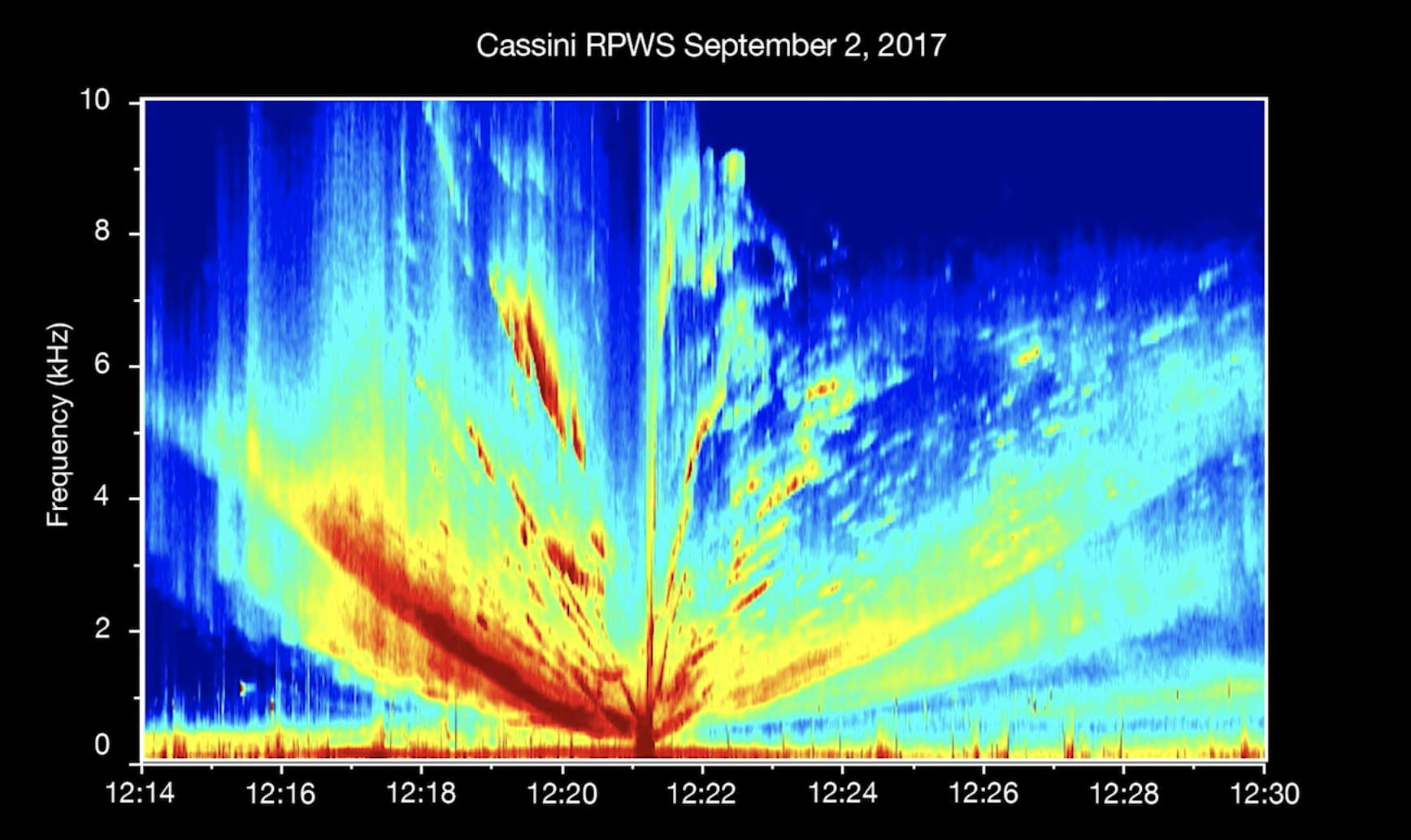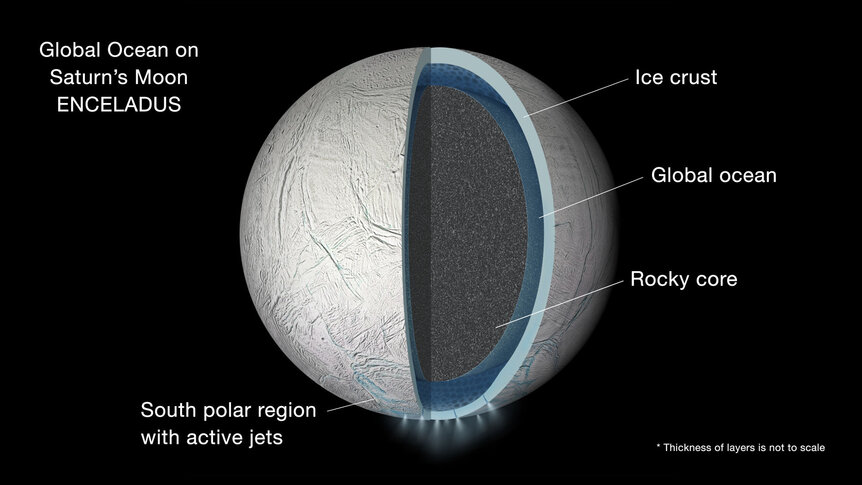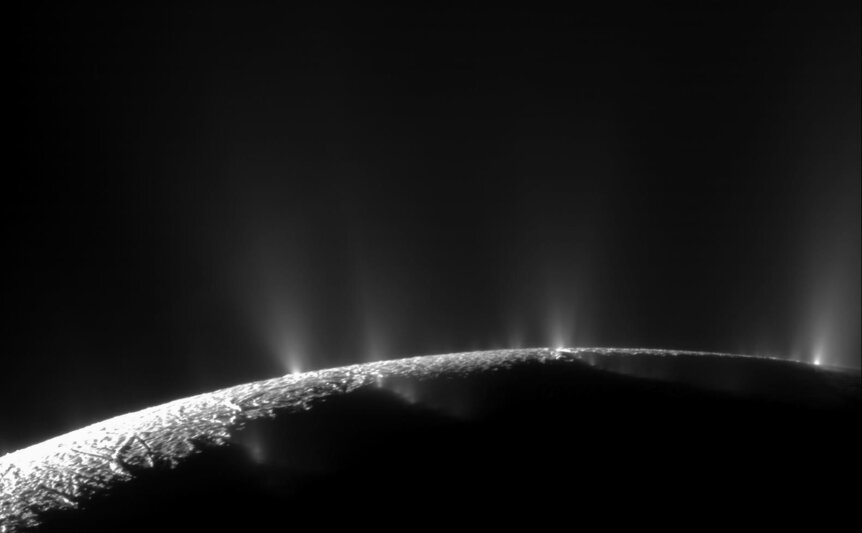Create a free profile to get unlimited access to exclusive videos, sweepstakes, and more!
Listen to the eerie wail of an icy moon of Saturn

In space, no one can hear you scream.
But you can listen to the extremely eerie moaning of Saturn's moon Enceladus as it orbits the giant planet. Kinda.
I'll explain below (because it's pretty cool), but the very brief summary is that Enceladus creates radio waves, and the Cassini spacecraft, which orbited Saturn for 13 years, had a radio wave detector on it. It measured the radio emissions from Enceladus, and then scientists converted those radio waves into sound (like a radio does), making … well, not a song, exactly. It's more of a bizarre and somewhat unsettling series of sounds that you might want to listen to with the lights on:
Man, that's weird. Like a preternatural chill running through my nervous system. Egads.
So what are we hearing here, exactly?
Sound waves are in some ways similar to electromagnetic waves (the fancy science word for light). They both have energy, wavelengths, frequencies, and so on. But in one way they're very different. Sound is a pressure wave, literally changing the pressure of that medium as it passes through it. That means you need something for sound to travel through, like air or water.
Electromagnetic waves aren't like that. They're fluctuations in a magnetic and electric field, and in a sense generate their own medium as they travel. They can therefore move through the vacuum of space, while sound can't.
Still, those basic properties are similar, and that means we can convert one to the other. It's like translating one form of currency into another; the Euro and the dollar are different, but we can exchange them at an agreed-upon rate.
We hear the frequency of sound waves as pitch: A higher frequency is a higher pitch. EM waves have different frequencies too (in the kind of light we see that determines the color), so if we have a detector that can measure those changes in frequencies, we can translate that change into sound.
Radio waves are a form of EM waves (just as the light we see is, but with much longer wavelengths), so we can convert them to sound as well. That's what a radio does!
That's also what the scientists did to make the audio file of Enceladus. But how is Enceladus making radio waves?
This part I love. Enceladus is one of the geologically active worlds in our solar system. The gravity of Saturn squeezes and stretches it, which generates a lot of heat inside the moon. The ice has warmed enough to melt, and the stress on the surface has created giant cracks that reach all the way down to that water. The pressure inside the moon forces the water up, up, and out, spraying it into space! These geysers were one of the biggest discoveries of the Cassini mission.
At the same time, Saturn has a powerful magnetic field, and spins rapidly. This acts like a scoop, sweeping up and accelerating ions (charged particles) around Saturn. These particles then slam into the water molecules spewed into space around Enceladus, hitting them so hard the electrons in the molecules get zapped off, creating even more charged particles.
This soup of ionized gas is called a plasma. If something pokes it, like the magnetic field running through it and trying to sweep it up, the electrons wiggle around. But electrons repel each other like similar poles of a magnetic, and this creates ripples in the plasma. It's like tossing a rock in a pond and watching the ripples expand outward in waves. Those electrons wiggle back and forth, and when they do they create radio waves. The frequency of the wave depends on how hard/fast the electrons wiggle.
Enceladus is basically a big radio transmitter.
Cassini had a detector on board called the Cassini Radio and Plasma Wave Science instrument. It was like a radio antenna, able to sense radio emission coming from Enceladus. As the spacecraft passed between the moon and planet, it recorded the changes in the radio waves it detected. It was these changes in frequency and strength that were converted into sound to make the video.
How awesome is that? You can do this with any radio waves, too. I recently wrote about "whistlers," changes in radio emission detected from Jupiter when lightning strikes affect the planet's ionosphere that were converted to sound. We "hear" the same thing happening on Earth! You can do this with aurorae, too, and the sounds are cool and weird.
This is more than just a bit of fun; changing the way we perceive things can help us understand them. It's why we use graphs to display data, or use different colors to map images! We can't see or hear radio waves, but plotting them using graphs and color helps. But being able to hear them by converting them to sound gives us a more visceral feel for what they're doing.
Even if that feel is like icy fingertips brushing the back of your neck.




























